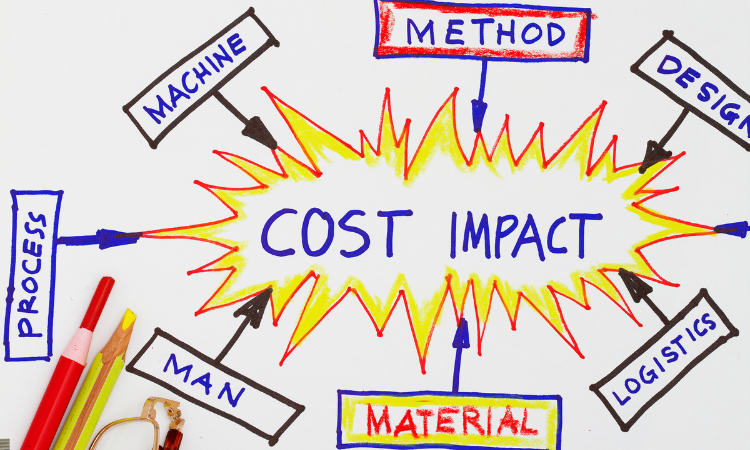Understanding web app development cost is the first step to planning your budget wisely. Many people start with an idea but have no clue what it might cost to turn it into a real app.
Without proper guidance, they either overspend or under-budget and face delays later.
This article will help you get a clear picture of what affects the cost, how much you might expect to pay, and how to make smart decisions before starting.
If your app is basic or highly customized, knowing the price drivers can save you stress and money.
Estimated Web App Development Cost (USD & AED)
Before starting a web app project, it helps to understand the usual price range. This gives you a clear idea of how much you might need, based on the size and type of app you plan to build.
| App Type | Estimated Cost (USD) | Estimated Cost (AED) | Notes |
| Basic Web App | $5,000 – $10,000 | AED 18,400 – 36,700 | Limited functionality, simple features |
| Mid-Range Web App | $15,000 – $30,000 | AED 55,000 – 110,000 | Dashboards, user roles, and integrations |
| Enterprise or Custom Web App | $50,000 – $75,000+ | AED 184,000 – 275,000+ | Highly customized, complex logic, scalable backend |
| Add-on Costs | Varies | Varies | Maintenance, security, 3rd-party APIs, testing, revisions |
| Multi-Device Support & Custom UI | Increases Overall Cost | Increases Overall Cost | Advanced UX/UI increases development time and cost |

What Factors Influence Web Application Development Cost?
Building a web app may look like one task, but several parts come together to shape its final cost.
Some factors are clear, while others are easy to overlook until the work begins. Understanding each part helps you avoid stress and manage your budget better from the start.
Feature Set and App Complexity
The number and complexity of features have a major impact on cost. Simple apps are quicker and cheaper, but once you add dashboards, payment systems, or real-time updates, the effort grows.
Each extra feature means more time spent on coding, testing, and design, which leads to a higher development budget.
Type of Development Team
Freelancers often charge less, but you may face delays or a lack of support. Agencies cost more but provide a full team and better structure.
In-house teams are suitable for long-term needs but require a bigger budget. Picking the right team is not just about price; it affects quality, timelines, and support too.
Technology and Tools Used
Using modern tools like React, Vue, or Node.js can improve performance, but it requires skilled developers. Complex tools or third-party services like AWS or Stripe often raise the cost.
Simpler apps using basic stacks are generally more cost-effective. The tech stack you choose must fit your app’s needs and future growth plans.
Design, Location, and Ongoing Needs
Custom designs and a smooth user experience cost more than templates. Developer location affects price; teams from the US charge more than those in Asia.
Also, app maintenance, hosting, and updates bring extra costs. Always plan for post-launch needs from the start to avoid surprises and keep your app running well.
What Impacts the Cost of a Web App?
The final cost of a web app does not depend on a single factor; it is a mix of multiple things working together.
One of the biggest price changers is the feature list. The more features you add, the more hours the team needs to build, test, and adjust things.
Next is team type; freelancers often cost less but may not offer long-term support. Agencies charge more, but they bring in design, development, testing, and project management all in one.
Another detail that adds to the cost is the tech stack. If your app uses newer technologies or needs advanced integrations, the developer’s hourly rate might increase.
Also, location plays a part. Developers in North America usually charge more than those in South Asia or Eastern Europe.
Every feature, every person involved, and every region plays its part in changing the final number.

Design and User Experience Costs
Design is one of the easiest parts to overlook when planning a budget, but it has a huge impact on cost and user success.
Some apps are built using simple templates, which keeps the price lower. But if you need a custom design with unique user flows, custom icons, responsive layouts, and animations, you will need to allocate more funds.
Designers and developers often work together on each screen, and if your app has many screens or different user roles, that means more design time.
Also, supporting your design across desktop, tablet, and mobile requires extra testing and adjustments.
A smooth and smart user experience might feel simple to the user, but it takes careful planning to get there.
This step also includes wireframes, mockups, revisions, and developer handoffs, all of which cost money.
Ignoring design at the start often leads to expensive rework later, so it is better to include it in your first budget.
Choosing the Right Team Within Budget
Selecting the right team is one of the most important choices in the entire web app journey.
Many people rush to hire the cheapest option, only to regret it when deadlines are missed or the final product does not work well.
Others go with the most expensive agency, thinking it will guarantee success, but pricing alone is never the full picture.
Always take time to check previous projects, client reviews, and communication style.
A good team will give honest timelines, ask smart questions, and keep you involved at every step.
Some teams charge hourly, while others offer fixed packages; each has pros and cons. If your app is small and clearly defined, a fixed package works well.
But for ongoing projects, hourly models offer flexibility. Also, see what is included in the cost:
Does it cover testing, support, revisions, and launch help? A team that fits your goals and respects your budget is worth the time to find.

Web App Cost Planning with BrandOut Experts
At BrandOut, clients get more than developers; they get clear guidance. The team helps you plan features, set priorities, and manage the budget.
They offer both web and mobile app development services with honest pricing and no surprise costs.
For those unsure where to begin, BrandOut breaks the process into simple, practical steps that make development easier to manage.
Closing Notes:
We hope this article was helpful for you. If you plan to build a web app, take the time to understand each step clearly.
Features, design, and the team you choose all influence the final cost. Before getting started, plan carefully. And if you ever feel stuck, do not hesitate to ask questions; there is always a way forward.
Helpful Questions with Answers:
How much does a website app cost?
A website app usually costs between $5,000 and $75,000 (AED 18,400 to 275,000). The final price depends on the number of features, the type of team you work with, and the complexity of the design.
Smaller apps are less expensive. In contrast, large custom platforms cost more due to the extra time, planning, and testing involved.
How much should website development cost?
Website development cost depends on the type of site. A basic business website may cost around $1,000 to $5,000, while custom sites with dynamic features, databases, or user logins can go up to $10,000 or more.
If you need e-commerce, dashboards, or custom workflows, your budget should reflect the extra planning and development time.
How much should I charge for a web app?
If you are a developer, your pricing should match the app’s scope. For simple apps, charging $3,000 to $7,000 is common.
For more advanced apps with dashboards, payments, or APIs, $15,000 to $30,000 is reasonable. Be clear about what is included, like design, revisions, or support, so your clients understand the full value.
How much should I pay for web development?
You should expect to pay based on project size and team experience. Freelancers might charge less, but agencies offer more structure.
For a basic site, around $2,000 to $5,000 is common. For custom platforms, expect $10,000 to $50,000+. Always ask for a clear breakdown so you know what is and is not included.
How much to build a platform?
Building a full platform like a job board, marketplace, or booking system can cost $20,000 to $100,000+, depending on features, user roles, and integrations.
Platforms take more time because they often need real-time updates, admin panels, payment systems, and layered user access. A well-planned platform saves money in the long run.




